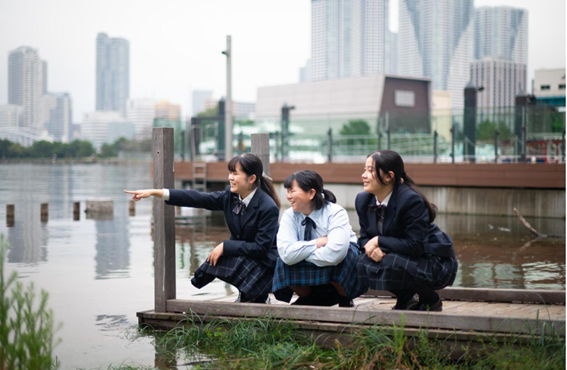(Adnkronos) – Tokyo, Nov 24 (Jiji Press) – From students dedicated to studying and protecting their local environment to advancements in AI-supported disaster prevention methods, Tokyo is working towards a more resilient future. At a time of growing global concern over climate change and natural disasters, the Japanese capital’s long experience in confronting the elements and its constant commitment to improving safety and sustainability can offer a model to other cities, starting with its youngest citizens.
Tokyo Metropolitan Shiba Commercial High School is located on Tokyo’s waterfront. The school offers many original extracurricular activities, but one in particular stands out: the “Mudflat Club”. Its members actively work in the mudflats of Waters Takeshiba, a multifunctional complex near the school. During the “Takeshiba Tidal Flat Open Days”, held once a month, students discuss with researchers and interact with neighborhood children.
One of the students, Taguchi Kumino, says that coming into contact with Takeshiba’s nature and organisms, and seeing visitors enjoy themselves, has increased her awareness of the importance of protecting the environment in Tokyo. “At school, we studied the problem of waste, but when I started collecting it in the tidal flat, I was shocked by the amount that arrives, including microplastics,” she explains. “Seeing the situation up close prompted me to talk to family and friends about how important it is to protect nature not only by avoiding littering, but also by trying not to produce any waste at all.”
Through these activities, club members have learned the value of nature and living beings. Their goal is to sell 200 copies of the illustrated book created by former members, ‘Visit to a Tidal Flat’, and continue to raise awareness of the wonders of the Takeshiba tidal flat.
At a school in central Tokyo overlooking the Parliament, a group of students is engaged in an unusual activity: collecting, observing, and sometimes even eating weeds. Members of the “Weed Research Club” at Tokyo Metropolitan Hibiya High School are studying the natural life that quietly thrives in the city’s corners, cultivating a new vision of how city and nature can grow together.
These young botanists use an original guide, ‘Flora of Hibiya High School’, inherited from former members. Thanks to the manual, they have created a map of the weeds present on campus and have even discovered rare plants. “Once we came across corydalis, a species listed in Tokyo Prefecture’s ‘Red List of Threatened Species’, right on our campus. It had very vibrant yellow flowers, and by looking for it, we realized it was an endangered species,” says club president Tsutsumi Yugo. “Knowing that such a plant is here made us feel a great sense of responsibility: now that we’ve found it, we want to protect it as much as possible and properly document our research.”
Tsutsumi observes that studying these “humble” plants has led him to reflect on how to live sustainably with nature even in the city, and on the change in mindset this requires: “Plants struggle to survive, but sometimes they can hinder people’s lives. The ideal would be a coexistence where they don’t cause too much disturbance.”
For centuries, Tokyo has expanded towards the bay, creating one of Japan’s most active hubs for commerce and daily life, but also vast low-lying areas, including the so-called “zero-meter zones”. Today, about 1.5 million people live in areas that, without protective infrastructure, would be flooded at every high tide.
Physical defenses remain essential, but the Tokyo Metropolitan Government (Tmg) is enhancing them through digital transformation (Dx). The initiative integrates new technologies into coastal protection across four main areas. First, an online storm surge prevention information system allows real-time consultation of tide levels, barrier status, and camera images. Second, a storm surge risk search service enables residents to enter an address and immediately see the possible flooding depth in case of a severe storm. Third, an AI-based model analyzes tide and weather data to predict water level changes up to fifteen hours in advance, supporting barrier and pumping station operations. Finally, Tmg officials are developing internal expertise to use drones for rapid and safe inspections during emergencies.
The Tmg’s approach has also been recognized internationally. In 2025, the AI-based water level prediction system was presented at the Smart City Expo World Congress in Barcelona. Multilingual functionalities have been integrated into the information systems so that residents and visitors can understand the risks and prepare. The message is clear: disaster prevention is not just a local problem, but a shared responsibility.




